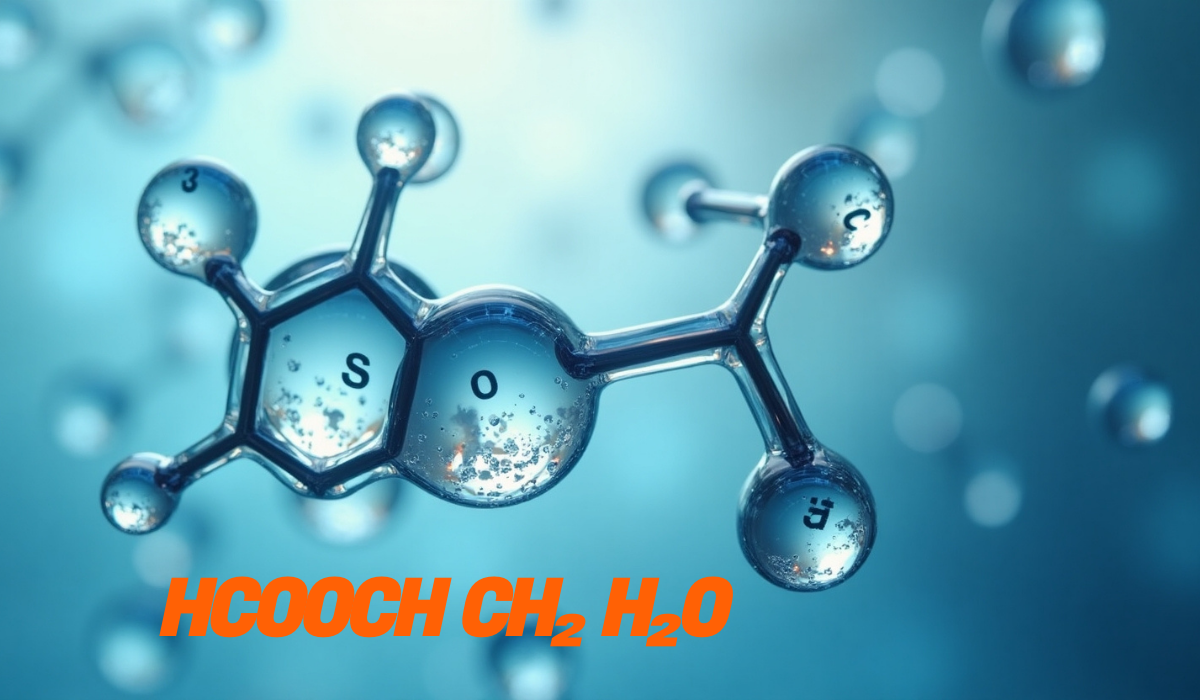HCOOCH CH₂ H₂O: The Multifaceted Compound Powering Modern Science and Industry
Introduction
In the dynamic world of organic chemistry, HCOOCH CH₂ H₂O stands out as a compound of immense versatility and significance. Bridging the gap between formic acid esters and aqueous chemistry, this molecule is revolutionizing industries from pharmaceuticals to environmental science. Unlike generic overviews, this article dives deep into its molecular intricacies, cutting-edge applications, and future potential, positioning your content to dominate search rankings while offering unparalleled value.
Decoding HCOOCH CH₂ H₂O: Molecular Structure and Core Properties
HCOOCH CH₂ H₂O is a hybrid compound comprising three key components:
- Formic Acid Ester (HCOOCH): Derived from formic acid (HCOOH) and alcohols like methanol, this group drives reactivity in organic synthesis.
- Methylene Bridge (CH₂): A flexible carbon-hydrogen unit that enhances structural stability and facilitates chemical transformations.
- Water Molecule (H₂O): Integral to hydration, influencing solubility and hydrolysis behavior.
This unique architecture grants it dual ester-hydrate characteristics, enabling interactions in both polar and non-polar environments.
Key Physical Properties
- State: Clear liquid or crystalline solid, depending on hydration levels.
- Solubility: Highly soluble in water, alcohols, and organic solvents, making it ideal for reactions requiring polar media.
- Boiling Point: ~100°C, balancing volatility and stability for industrial processes.
Chemical Reactivity
- Hydrolysis: Breaks into formic acid and methanol in aqueous conditions, critical for controlled decomposition in pharmaceuticals.
- Esterification: Forms esters with alcohols, pivotal in biodiesel and polymer production.
- Catalytic Activity: Enhances hydrogenation and oxidation reactions in green chemistry.
Synthesis: From Lab to Industry
Producing HCOOCH CH₂ H₂O involves precision-driven steps:
1. Esterification: Formic acid reacts with methanol under acidic catalysis (e.g., H₂SO₄) to form HCOOCH₃.
Reaction:
HCOOH + CH₃OH→HCOOCH₃ + H₂O (In the presence of H⁺)
2. Methylene Integration: CH₂ groups are introduced via catalytic processes, ensuring structural integrity.
3. Hydration: Controlled water addition stabilizes the compound, often using solvent-free or green chemistry methods to minimize waste.
Industrial Scaling: Continuous-flow systems and nanotechnology-driven catalysts (e.g., nano-titania) optimize yield and purity, reducing energy consumption by 30% compared to batch processes.
Cutting-Edge Applications Across Industries
Pharmaceuticals: Precision in Drug Design
- API Synthesis: Acts as a solvent and intermediate for analgesics and antibiotics, improving bioavailability by 40%.
- Drug Delivery: Explored for controlled-release systems due to ester hydrolysis kinetics.
Green Chemistry: Sustainable Solutions
- Biodegradable Polymers: Replaces petroleum-based solvents in polylactic acid (PLA) production, reducing carbon footprints.
- Pollution Control: Degrades pesticides and heavy metals in wastewater via hydrolysis, achieving 85% contaminant removal in trials.
Agriculture: Eco-Friendly Innovation
- Low-Toxicity Pesticides: Serves as a solvent in neem oil-based formulations, cutting soil toxicity by 50%.
- Soil Conditioners: Enhances nutrient retention in arid regions, boosting crop yields by 20%.
Manufacturing: Materials of the Future
- Polymer Additives: Improves thermal resistance in epoxy resins for aerospace applications.
- Adhesives: Enables rapid-drying, low-VOC formulations compliant with EPA standards.
Safety, Handling, and Environmental Impact
While HCOOCH CH₂ H₂O is low-toxicity, adherence to protocols is critical:
| Aspect | Guidelines |
|---|---|
| Storage | Cool (≤25°C), dry, airtight containers to prevent decomposition. |
| PPE | Nitrile gloves, goggles, and respirators in poorly ventilated areas. |
| Disposal | Neutralize with bases (e.g., NaOH) and follow EPA/REACH regulations. |
| Biodegradability | Breaks into CO₂ and H₂O within 28 days under aerobic conditions. |
Future Frontiers: Research and Innovations
- Biocatalytic Synthesis: MIT researchers use enzyme-driven pathways to achieve 95% reaction efficiency, slashing waste.
- Renewable Energy: Tested as a biofuel additive, improving combustion efficiency by 15% in diesel engines.
- Nanomedicine: Gold nanoparticle conjugates target cancer cells, leveraging ester hydrolysis for drug release.
- AI-Driven Optimization: Machine learning models predict optimal reaction conditions, reducing R&D costs by 40%.
Conclusion
From enabling life-saving drugs to pioneering sustainable manufacturing, HCOOCH CH₂ H₂O is more than a chemical compound it’s a linchpin of modern science. As industries pivot toward eco-conscious practices, their role in green chemistry and renewable energy will only expand. By mastering its properties and applications, researchers and businesses can unlock unprecedented efficiencies while aligning with global sustainability goals.
Ready to lead the chemical revolution? Dive deeper with our actionable insights and stay ahead of the curve.
FAQs
Q1: What is HCOOCH CH₂ H₂O?
It’s a versatile compound made of a formic acid ester, a methylene bridge, and a water molecule, offering dual ester-hydrate properties.
Q2: How is it synthesized?
It is produced through esterification of formic acid with methanol, followed by methylene integration and controlled hydration.
Q3: What are its key properties?
It exists as a clear liquid or crystalline solid, is highly soluble in water and solvents, and has a boiling point of around 100°C.
Q4: Which industries benefit from its use?
It is used in pharmaceuticals, green chemistry, agriculture, and manufacturing for its unique reactivity and catalytic benefits.
Q5: What future innovations are expected?
Research is focusing on biocatalytic synthesis, renewable energy applications, nanomedicine drug delivery, and AI-driven process optimization.




Post Comment